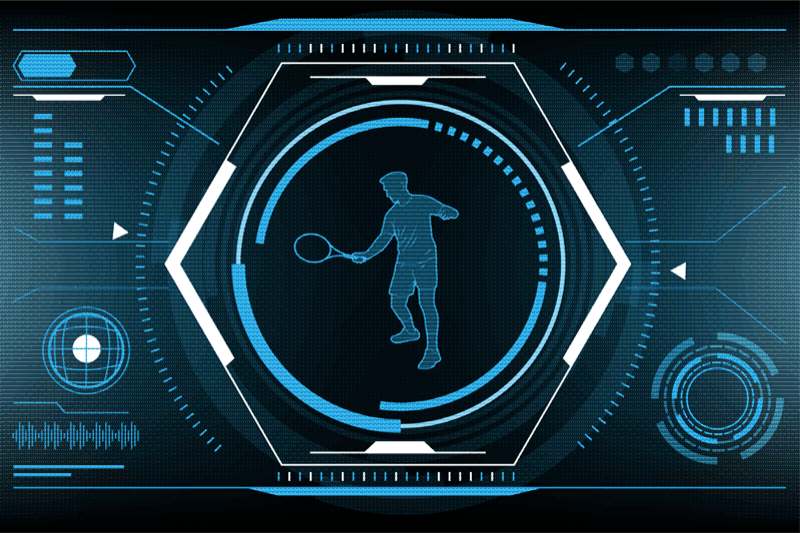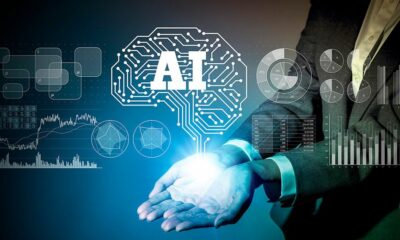It was strange to think about tracking your heartbeat or footprints a decade ago. Journalists covered the odd new trend at conferences, and those committed to the quest of quantified self-knowledge preached in TED Talks. A wearable device is now owned by over 40% of American households, according to statistics provided by Statista. Retirees frequently compare or brag about how many steps they took each day. The measurable self is in the ascendant.
As artificial intelligence continues to grow at an exponential rate, scientists and technologists are now searching for ways to go even farther. They want to create AI health coaches that can analyze health data and provide advice to users on maintaining optimal fitness.
The success of the measurable self
Numerous pieces of evidence point to the fact that wearables do, at minimum, provide some advantages. A 2022 review of scientific studies discovered that individuals assigned to wear activity trackers lost two pounds on average (about 1,800 extra steps per day) among over 160,000 participants in all the included studies.
According to Carol Maher, a population and digital health professor at the University of South Australia and a co-author of the review, wearables alter behavior in a variety of ways, including encouraging users to set goals, enabling them to monitor things that matter to them, and alerting them when they’re not on track to satisfy their objectives.
But according to Andrew Beam, an assistant professor studying medical artificial intelligence at the Harvard T.H. Chan School of Public Health’s Department of Epidemiology, these effects frequently wear off over time.
AI is needed to accurately detect the measures that matter to us from signal inputs, such as counting steps from an accelerometer worn on the wrist. However, this type of AI is unglamorous and uncool, according to Shwetak Patel, director of health technologies at Google and a professor of computer science and engineering at the University of Washington. “AI can stretch the capability of that sensor to do things that we may not have thought were possible.” he continues, but there is still a lot more it can already do. This includes functions like blood oxygen and fall detection that are already present in well-known wearable technology. Although usually not as accurate as devices used to diagnose diseases, some researchers are attempting to use the relatively basic health data provided by wearables to detect disease, including COVID-19.
AI has so far contributed minimally to the rise of the quantified self. In an effort to elevate artificial intelligence, researchers hope to leverage recent developments.
The upcoming health coaches powered by AI
In a recent paper that Patel co-authored, researchers fed wearable data into large language models—like OpenAI’s GPT series—and the models produced reasoning about the data that might help clinicians diagnose mental health conditions. For instance, the AI system would identify irregular sleep patterns in research participants and state that they “may be an indicator of various issues, including stress, anxiety, or other disorders.”
According to Patel, the next generation of AI models will be able to reason, which means they may be applied to individualized health coaching. It’s unclear, according to some researchers, whether large language models are capable of reasoning. Saying, “Your average heart rate is 70 beats per minute,” is one thing, but he goes on.
According to Patel, wearable data may also make it possible for AI “coaches” to comprehend users’ health at a far deeper level than a human coach could. A human coach could, for instance, ask you how you slept, but wearable technology could offer comprehensive, unbiased sleep data.
Maher has also contributed to the writing of a review of the literature on the impact of AI chatbots on lifestyle choices. The review revealed that, while the impact was not as great as that of wearables, chatbot health coaches can assist individuals in improving their diets, getting more sleep, and increasing their physical activity levels. The rather basic chatbots used in these studies were created years ago, long before OpenAI’s ChatGPT, for instance, and Maher anticipates that more advanced AI health coaches would be more successful. She does point out that there are still issues with large language models like ChatGPT that need to be resolved, such as the models’ propensity to invent facts.
Maher has also contributed to the writing of a review of the literature on the impact of AI chatbots on lifestyle choices. The review revealed that, while the impact was not as great as that of wearables, chatbot health coaches can assist individuals in improving their diets, getting more sleep, and increasing their physical activity levels. The rather basic chatbots used in these studies were created years ago, long before OpenAI’s ChatGPT, for instance, and Maher anticipates that more advanced AI health coaches would be more successful. She does point out that there are still issues with large language models like ChatGPT that need to be resolved, such as the models’ propensity to invent facts.
According to Beam, there are good reasons to be wary of chatbot health coaches. Initially, they experience the same gradual decline in efficacy as wearables. Second, when it comes to health, even human scientists with access to massive amounts of personal data still lack sufficient knowledge to provide tailored recommendations.
An artificial intelligence (AI) health coach could keep track of whether a particular action appears to be beneficial and modify its recommendations accordingly, even in the absence of sufficient evidence to provide specific recommendations to various individuals based on their health data. For instance, Sandeep Waraich, Google’s product management lead for wearable devices, says that heart rate data collected during a recommended workout could be used to guide future exercise recommendations.
Not just large tech companies are attempting to leverage wearable data to offer ongoing, individualised health coaching. App for health Based on movement and heart-rate data, Humanity claims to be able to determine a user’s “biological age” to within three years. A wrist-worn accelerometer was worn for a week by 100,000 participants in the U.K. Biobank, which provided the data used to develop Humanity’s algorithm. However, tracking the changes in biological age excites Humanity’s co-founder and chief strategy officer, Michael Geer, even more.
According to Beam, the issue with monitoring metrics such as Humanity’s “biological age” is that there is currently insufficient data connecting them to concrete health outcomes, such as a decline in all-cause mortality. According to him, there is an issue with AI’s application in healthcare in general. “In general, it’s best to proceed cautiously in this situation.


 Entertainment4 weeks ago
Entertainment4 weeks ago
 Business3 weeks ago
Business3 weeks ago
 Business3 weeks ago
Business3 weeks ago
 Business3 weeks ago
Business3 weeks ago
 Technology4 weeks ago
Technology4 weeks ago
 Technology2 weeks ago
Technology2 weeks ago
 Business2 weeks ago
Business2 weeks ago
 Technology2 weeks ago
Technology2 weeks ago














